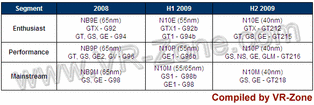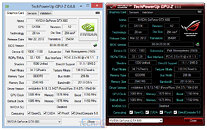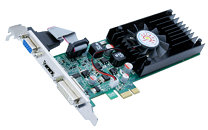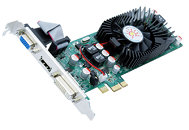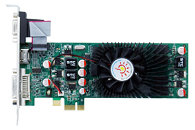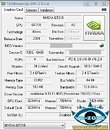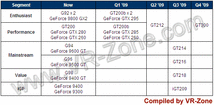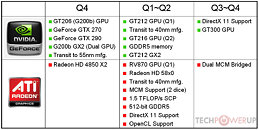NVIDIA looks to have a complete lineup for mobile discrete graphics processors apart from their integrated graphics based chipsets that are gaining in popularity. VR-Zone compiled a list of GPUs slated for 2009. For some part, current-generation GPU architectures based on current manufacturing processes are noted, while the second half of 2009 will witness the introduction of GPUs based on the 40nm manufacturing processes, derived from the GT21x series GPUs.
Currently, NVIDIA mobile GPUs include derivatives from the 65nm G92, G94, G96 and G98 GPUs that make the lineup, top to bottom. In the first half of 2009, the same GPUs will be built on the newer 55nm manufacturing node and used in newer SKUs under N10E series for the enthusiast, N10P series for performance and N10M series for the mainstream segments. The GPU codenames will be simply suffixed with a "b" next to their company codenames and a "1" next to their product names (for example: GeForce 9800M GTX1). Desktop graphics cards are already being built on 55nm variants of the G9xb GPUs. In the second half of 2009, NVIDIA will use the GT212, GT215, GT216 and GT218 to build their mobile discrete graphics lineup. The GT212 is a high-end GPU, derivatives of which, will be used in the newer mobile GeForce GTX series in the enthusiast segment along with GT215 GPU, which will make it to the high-end GeForce GT, GeForce GS and GeForce GE series. The mid-range of the same series will be based on products derived from the GT216 series, in the performance segment. Finally, the GT218 GPU will go into making the value-mainstream products, the lower-end of the same GeForce GT, GS and GE series.
